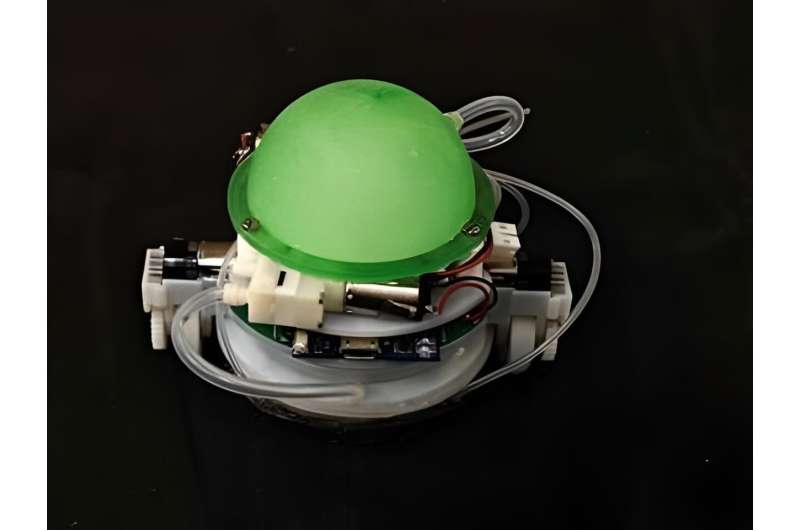This article has been reviewed according to Science X's editorial process and policies. Editors have highlighted the following attributes while ensuring the content's credibility:
fact-checked
peer-reviewed publication
trusted source
proofread
New snail-inspired robot can climb walls

A robot, designed to mimic the motion of a snail, has been developed by researchers at the University of Bristol.
Adding to the increasingly innovative new ways robots can navigate, the team, based at the Bristol Robotics Laboratory, fitted the robot with a sliding suction mechanism enabling the device to slide on water, a substitute for a snail's mucus which also acts as an adhesive.
The study, which was published May 13 in Nature Communications, shows a novel way for robots to scale walls easily, potentially changing how difficult-to-access surfaces such as blades of wind turbines, hulls of ships, aircrafts and glass windows of skyscrapers are autonomously inspected.
These features also endow sliding suction with great potential for future applications in robotic fields, including industrial gripping, climbing, outdoor and transportation.
Snails can stably slide across a surface with only a single high-payload sucker, offering an efficient adhesive locomotion mechanism for next-generation climbing robots. The critical factor for snails' sliding suction behavior is mucus secretion, which reduces friction and enhances suction.
Lead author Tianqi Yue explained, "People know that snails have a stable adhesive sliding behavior, even though they are carrying a heavy payload, in this case a shell.
"Inspired by this, we presented a 'sliding suction' mechanism and developed a sliding suction robot, which achieved comparable sliding ability as snails."
As mucus plays an important role in the sliding suction mechanism, the team used water as a cheap, easy-to-access and clean artificial mucus to help the robot slide while the suction remained.
They optimized the materials of the suction cup, designed the mechatronic system of the robot, and were able to demonstrate practical applications of the robot, such as carrying a 200g mass and avoiding obstacles. The robot also demonstrated high loaded sliding ability carrying 1kg mass, ten times heavier than itself.
The sliding suction allows a lightweight robot to slide vertically and upside down, achieving high speeds and does not require energy during static adhesion.
Tianqi added, "Through the performance of sliding suction robot, we demonstrated that sliding suction offers low energy consumption, high adhesion efficiency and safety, high loading capacity and low complexity, while only leaving a quick-to-evaporate water trail.
"The most exciting finding of our research it that the proposed sliding suction mechanism is a novel clean climbing strategy and will significantly advance the development of the next-generation climbing robots."
More information: Tianqi Yue et al, Snail-inspired water-enhanced soft sliding suction for climbing robots, Nature Communications (2024). DOI: 10.1038/s41467-024-48293-2


















